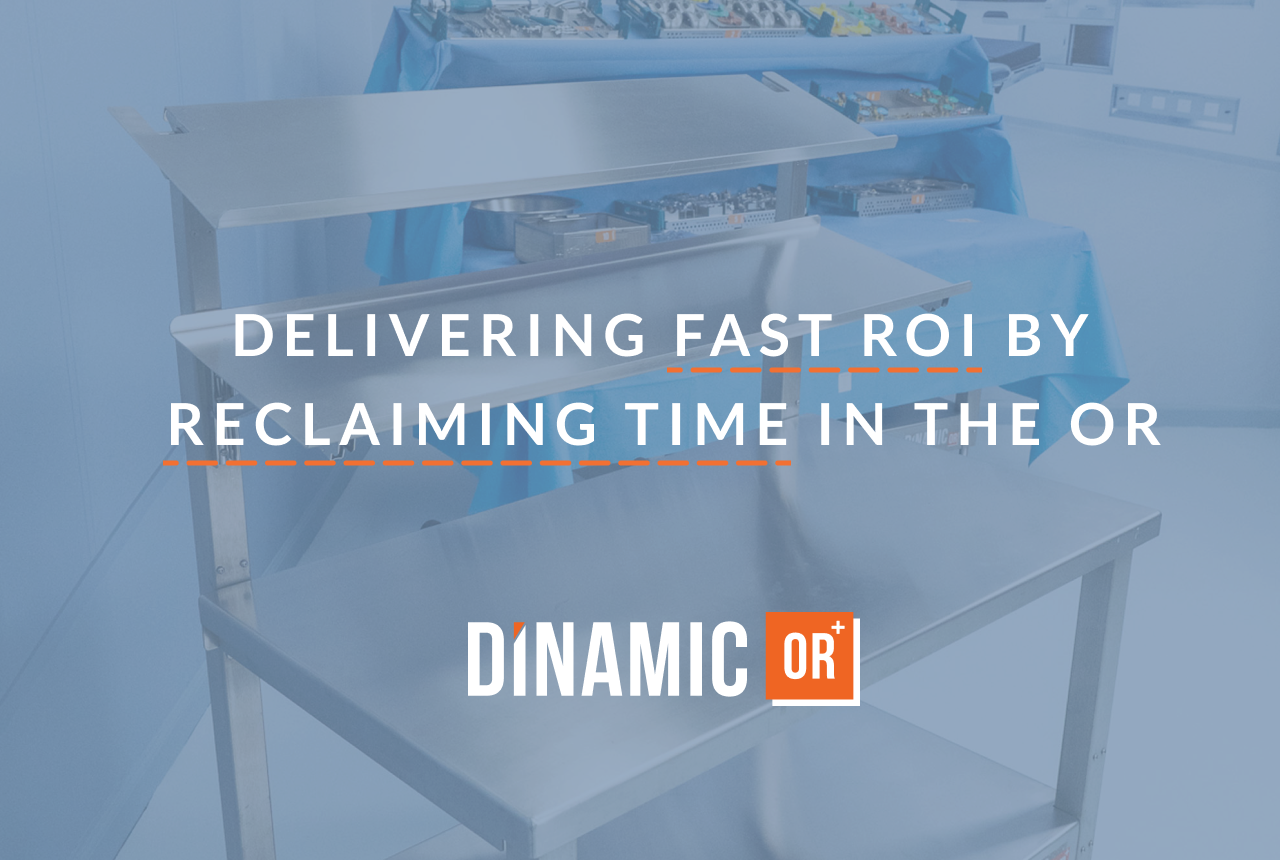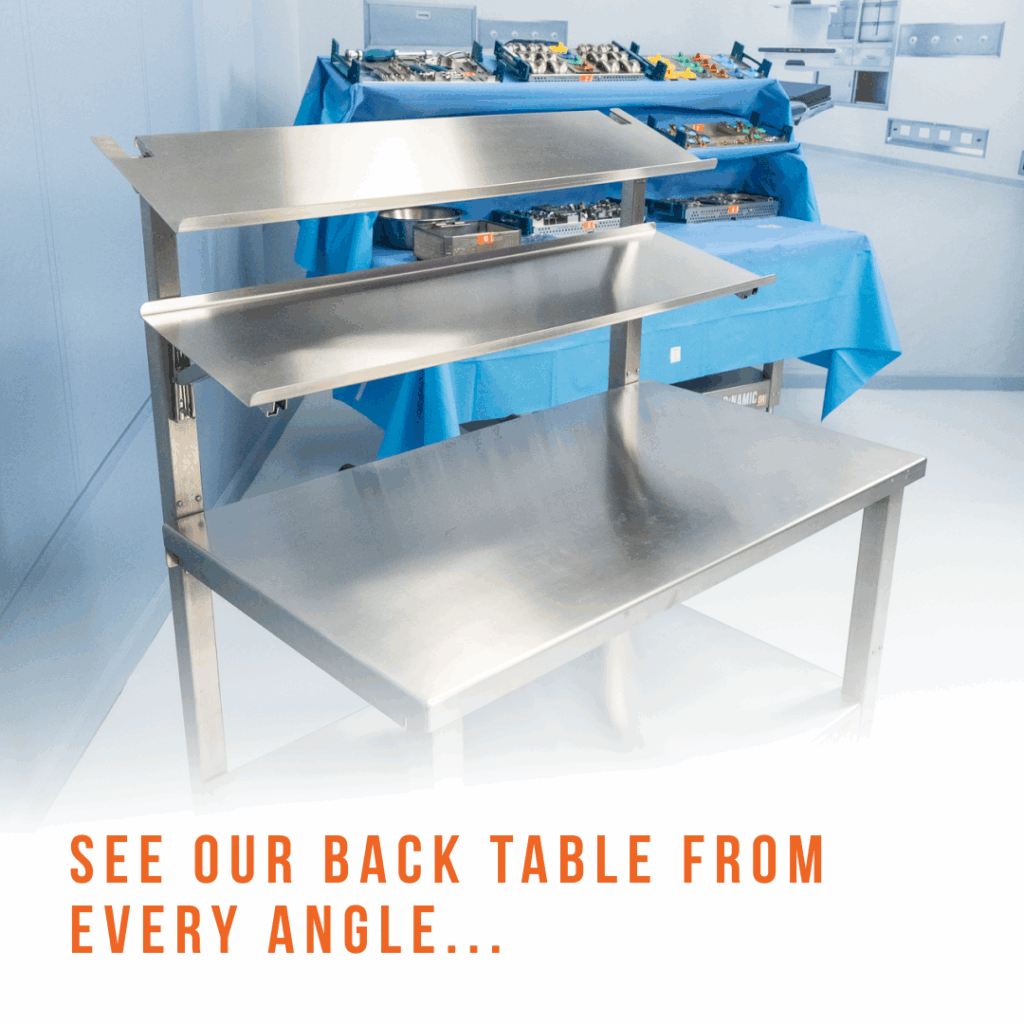

Hospitals today are under relentless pressure to do more with less—more cases, fewer resources; more efficiency, smaller teams. Amid rising expenses, staffing shortages, and procedural backlogs, the operating room (OR) remains one of the most critical—and costly—areas of a healthcare facility. Improving efficiency in this space is no longer a luxury, but a necessity.
At DinamicOR, we’ve seen firsthand how smarter tools lead to faster results. Our integrated solution of an adjustable back table, durable drape, and workflow management app was designed to do three things: save time, reduce costs, and improve patient care.
A Time-Based Approach to ROI
Every minute saved in the OR can be reallocated toward additional procedures, improved staff performance, or enhanced patient care. When you streamline even a small portion of the surgical process—setup, breakdown, or intraoperative organization—those minutes add up quickly.
In a recent 34-case clinical evaluation of total knee arthroplasty (TKA), 17 procedures were conducted using standard flat table surfaces, while 17 others utilized the DinamicOR system. The results were clear:
-
Setup time decreased by 24%
-
Breakdown time decreased by 38%
-
Tray movements dropped by 85%
-
Instrument visibility increased from 71% to 100%
-
Average weight lifted by staff reduced by 375 pounds per case
These improvements aren’t abstract. They’re real-time gains that create room for additional cases, reduce turnover stress, and allow for a more sustainable OR flow.
(Source: Clinical evaluation of intraoperative efficiency improvements, FlexOR LLC, 2019)

Standardization that Pays Off
One of the key barriers to surgical efficiency is inconsistency—how instruments are arranged, where trays are located, or how information is passed from one team to the next. The DinamicOR system introduces consistency by:
-
Mapping every tray location with numbered placements on the drape
-
Supporting repeatable setup workflows through the Workflow App
-
Minimizing the need for stacking or shifting trays intraoperatively
With this standardization, hospitals reduce wasted motion, accelerate onboarding, and decrease the chance of setup errors—key issues that often add hidden time and cost to each case.
Room for More: Increasing Daily Surgical Volume
The greatest return on investment doesn’t just come from cost reduction—it comes from value creation. When ORs can reduce setup and breakdown time, they open opportunities to perform additional procedures each day.
In the white paper’s evaluation, these saved minutes were gained without sacrificing safety or quality—meaning one more case per day becomes not only feasible, but sustainable. More volume equals more revenue, with the same resources and staff.
Reach out to [email protected] for a copy of the white paper research.
Long-Term Value, Immediate Gains
Fast ROI isn’t about a price tag—it’s about how quickly your system starts working for you. The DinamicOR system is built for a high-impact launch and a long-term effect. It minimizes variability, reduces physical strain, improves visibility, and makes education and procedural onboarding scalable across your team.
In today’s economy, that’s not just efficiency—it’s survival.
Ready to See the System in Action?
Let us show you how DinamicOR can streamline your surgical process, improve safety, and deliver value—case after case.
Schedule your live virtual demo today at [email protected]
Learn more at www.dinamicor.com
Citations & References
FlexOR, LLC. (2019). Clinical evaluation of intraoperative efficiency improvements for surgical technicians utilizing tiered working surfaces. Source: Internal White Paper *Reach out directly for access*
Bureau of Labor Statistics. (Referenced in white paper for injury data)
Vizient, Inc. Surgical Tray Optimization. Retrieved from: Vizient Website
Childers, C. P., et al. (2018). Estimates of Operating Room Time Costing Across 302 Hospitals in the United States. JAMA Surgery.
View Study

